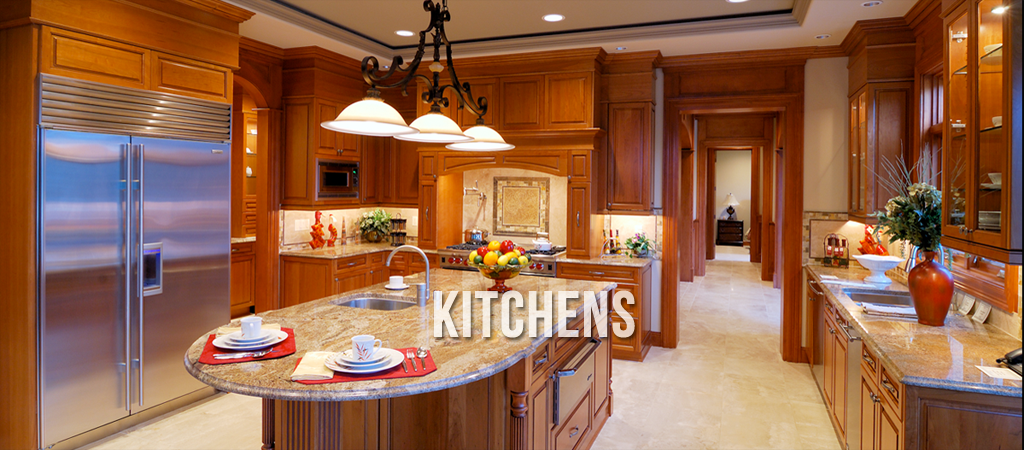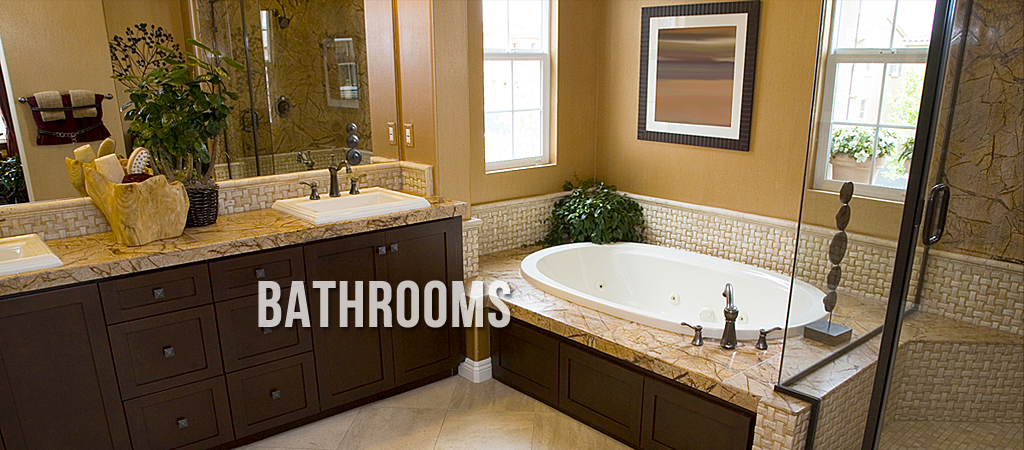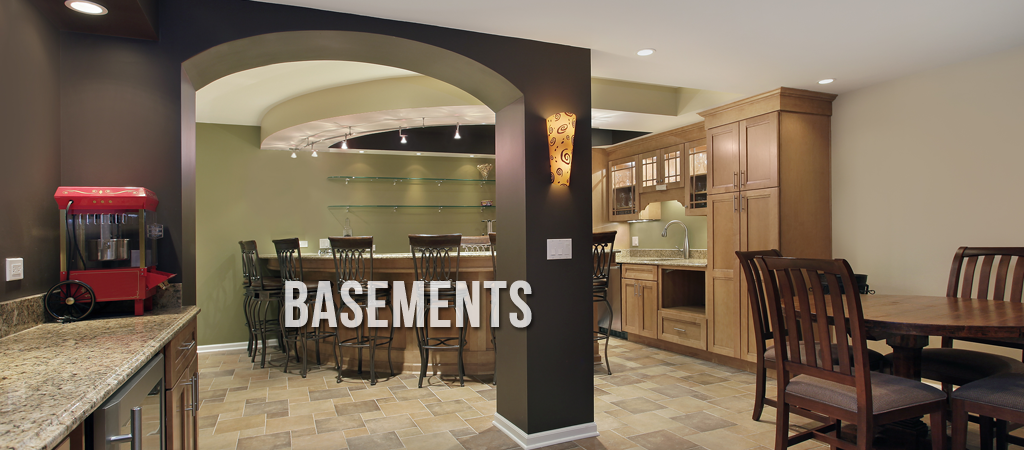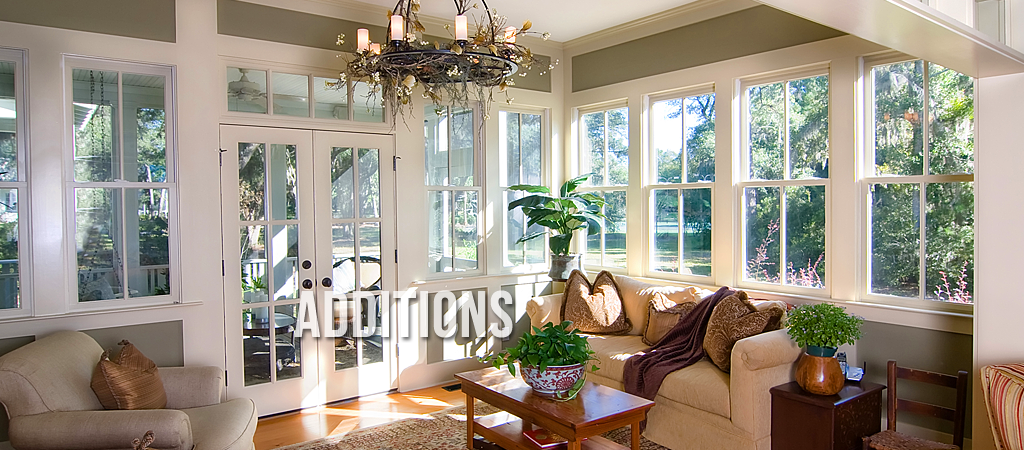Bathroom Remodels and Additions: Potentially Complex—But So Worth It!
09-06-2019
Here’s a home-buying reality: kitchens and bathroom sell houses. People most often buy the most expensive house they can afford. And they look closely at kitchens and baths when they’re deciding which house to commit to.
At the same time, sometimes a bathroom remodel or addition is in order because a need arises for handicapped accessibility, greater storage, structural improvements, or simply aesthetic preference. The parameters for remodeling or adding a bathroom if you plan to stay in your current home for the foreseeable future are going to differ from the parameters for a remodel focused on home resale.
Today’s blog focuses on bathroom remodels and additions, some of the reasons for doing them, and a few aspects to consider in the process. In any case, finding the right home remodeling contractor is crucial to your renovation or addition project.
The reality is that, according to many experts, a midrange bathroom renovation involving gutting the room to the studs and building it back up will cost between $14,000 and $30,000, depending on the features you choose to put into the space. Adding a bathroom, especially if you are adding to your house’s footprint, will likely cost significantly more, depending on your contractor’s price point, plumbing issues, bathroom size, and so on. Your design taste and square footage will affect your bathroom remodeling budget—a smaller bathroom can be, but isn’t necessarily, less expensive than a larger one.
A bathroom remodel or addition can add tremendous value to your home, but it’s important to consider every aspect of the project in order to control costs and get the best value for your renovation money. A midrange bathroom remodel is a solid investment in your home: it will recover about 58% of those costs when it’s time to sell your home. The enjoyment factor of a new or renovated bathroom is high, too—homeowners rate it as among the most satisfying renovation projects in the long term.
Take note: bathroom remodels and additions are inherently less efficient to complete than other remodels because the space is so tight and so many utilities come into play—water, heating, electric. Generally, only one trade can fit into a bathroom at a time—it’s tough for a plumber to work around a painter or tiler, for example. Timing is crucial; you don’t want days to go by between tradesmen coming in. And, ideally, all your materials should be on hand before you start demolition—no one wants a stalled project because the tub didn’t come in or the tile was broken in shipment.
Maybe you’re thinking of selling your home—either very soon or “someday, maybe.” In that case, your goal is to end up with a bathroom you enjoy now but that buyers can see themselves using. Your brand-new or improved bathroom should appeal to and impress buyers looking at your type of house. Go for timeless style with a little “zing” factor that makes the space unique but is still pretty universal in its appeal, and consider budget-cutting strategies where you can.
Again, your renovation focus must home in (no pun intended) on what sells a house. First off, master baths and powder rooms are worth the closest focus, followed by guest and secondary (kids’) bathrooms. “Focus on the visuals: nice tile, nice colors, nice fixtures—and don’t spend a lot on the high-end utilities,” notes Cameron Snyder, president, Roomscapes Luxury Design Center, Boston, Mass., and past-president of the National Kitchen & Bath Association (NKBA). Not everyone, for example, wants a bidet in their bathroom, or the very latest in vessel touch-faucet sink design. Choose neutral colors for a streamlined, clean look that can accommodate a variety of color accents and accessories.
As for the “zing” or luxury factor, think strategically. It’s possible to add attention-getting touches without breaking the bank. If you replace the floor, add radiant heating mats. Buyers will remember those heated floors! If you’re retiling the shower or bath, use a relatively inexpensive tile for most of the space and add a band or inset of really beautiful, special tile—mother-of-pearl, bas relief with a Greek key motif or a botanical, something that strikes your fancy without being so whimsical or personal that it might turn off a potential buyer. Use found space to create more storage—a big selling point in a bathroom renovation when it comes to resale. Hand-held shower heads are convenient and cost very little more than standard heads. Striking light fixtures are a draw as well—in fact, lighting in general is a crucial part of any bathroom renovation. Remember—people are putting on makeup in there!
When choosing a general contractor for your bathroom remodel, be sure to get references from other local homeowners. Not only is sticking to your budget and timeframe important, you will also be living around your contractor’s staff and subcontractors for many hours a day—perhaps for a significant period of time. The perfect contractor is clean (i.e., doesn’t track dirt all over your house and tidies up after each day’s work), prompt, fully insured, courteous, and realistic about budget. Make sure you trust your contractor and his or her workers.
Once you’ve chosen your remodeling company (assuming you choose to go that route), your contractor can help you take inventory of the situation and design a renovation around your budget. In general, if you’re thinking resale, cosmetic changes offer a better return than major structural changes. That said, if you’re short a bathroom, adding one or rethinking what you have could be worth it.
If you’re pursuing a bathroom remodel, what do you like (if anything) about your current bathroom? Do you already have a good (or at least workable) layout? Is storage currently adequate? Do you want to add a shower or tub, or can you work with what you have and simply retile? Perhaps the cabinets just need to be refaced or fixtures and built-ins refreshed with new hardware. Maybe the whole room needs a good cleaning, a great paint job, and new mirrors and accessories. On the other hand, maybe the entire space is a wash (again, pardon the pun) and needs to be reconceived completely. Also: what expectations do buyers in your market have? Do you need to add a half bath or a full bath to compete? Do buyers prefer walk-in showers to tub-showers?
What if you plan to stay in your home for the foreseeable future or face newly emergent needs? If the bathroom remodel is happening because (for example) someone in your home needs handicapped access, you’ve had or are expecting triplets, or you want to create a master suite—and if you plan to stay in your home for at least another ten years and have the financial means to support a more personalized bathroom renovation—considering home resale value may be less important to you.
In such a case, budget and need are still your starting points. What can you afford? What need or desire are you addressing with the bathroom remodel? Do you need only to replace a tub with a walk-in tub or shower? Do you need to replace all fixtures and add handrails? Does the door to the bathroom need to be widened? Does space need to increase between fixtures to enable passage of a walker or wheelchair? Do you need to replace the floor with a nonslip tile? If you’re remodeling out of desire, what do you adore? What features matter the most to you? How many sinks do you want? What kind of tile or stone? Most often, some compromises will have to be made—you will want to choose the aspects that matter most to you and be prepared to spend significant money on utilities, as well as any luxury touches you may desire for your bathroom. If you’re building an addition, you and your contractor will have more freedom in designing the room. If, however, you are carving space out of your home’s current footprint (the most economical choice) or remodeling an existing bathroom, you will need to work with what you have to make all the puzzle pieces fit.




